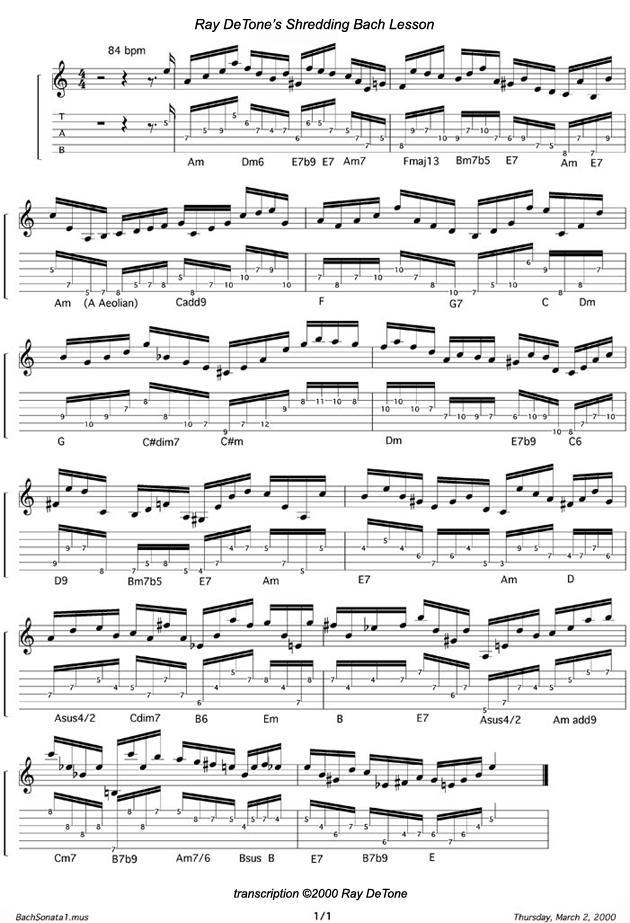
©2000 Ray DeTone

©2000 Ray DeTone
This Bach Partita came my way via a guitar student that had visited Jennifer Batton’s web site and discovered her two handed tapping arrangement of this violin piece. Since the tapping was way over his head he started to learn the piece by flatpicking it but soon discovered that finding the appropriate and most efficient fingering was not always as simple as it may appear.
Thus I transcribed the following fingering and turned it into a lesson ( or quite a few lessons in the case of this student ) which is a great exercise for right hand picking as well as left hand fretting technique. And to keep the student thinking about theory instead of blindly playing patterns over and over again, I had him figure out the appropriate chords that Bach was arpeggiating in this melody.
Start real slow with this figure and take it measure
by measure. Work your way up to a tempo of 84 bpm (and beyond if you
dare). Keep your picking strictly alternating.
(A down-pick
always follows an up-pick and an up-pick always follows a down-pick.
NO EXCEPTIONS!)
| NAME Major Minor Seventh Minor 7th Major 7th Major 6th aka 6th Minor 6th Major 13th Suspended (sus, sus4) Suspended 2nd (sus2) m7b5 (half-diminished) Diminished (dim) Diminished 7th 7b9 add9 Augmented (aug, +) Augmented 7th |
= = = = = = = = = = = = = = = = = |
MAJOR SCALE INTERVALS (all C root chords go with the C major scale,etc.) 1, 3, 5 1, b3, 5 1, 3 , 5, b7 1, b3, 5, b7 1, 3, 5, 7 1, 3, 5, 6 1, b3, 5, 6 1, 3, 5, 7, 9, 11, 13 ( in this case 1, 3, 7,13 aka: 6/7 chord) 1, 4, 5 1, 2, 5 1, b3, b5, b7 1, b3, b5 1, b3, b5, bb7(6) 1, 3, 5, b7, b9 1, 3, 5, 9 1, 3, #5 1, 3, #5, b7 |
As you play thru each measure of this piece take a mental picture of the notes and patterns of the arpeggios. Relate them to each of the chord names I have placed under the group of notes. And remember some of these shapes and arpeggios are not the most obvious but they can definitely be used to solo over the chord mentioned, in any song you play. Thank you, once again, Mr. Bach.
